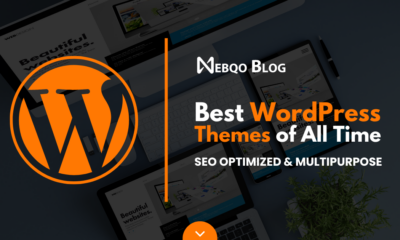SEO
Site Quality Is Simpler Than People Think

Google’s John Mueller, Martin Splitt and Gary Illyes discussed site quality in a recent podcast, explaining the different ways of thinking about site quality and at one point saying it’s not rocket science. The discussion suggests that site quality could be simpler than most people know.
Site Quality Is Not Rocket Science
The first point they touched on is to recommend reading site quality documentation, insisting that site quality is not especially difficult to understand.
Gary Illyes said:
“So I would go to a search engine’s documentation.
Most of them have some documentation about how they function and just try to figure out where your content might be failing or where your page might be failing because honestly, okay, this is patronizing, but it’s not rocket science.”
No Tools For Site Quality – What To Do?
Gary acknowledged that there’s no tool for diagnosing site quality, not in the same way there are tools for objectively detecting technical issues.
The traffic metrics that show a downward movement don’t explain why, they just show that something changed.
Gary Illyes:
“I found the up-down metric completely useless because you still have to figure out what’s wrong with it or why people didn’t like it.
And then you’re like, “This is a perfectly good page. I wrote it, I know that it’s perfect.”
And then people, or I don’t know, like 99.7% of people are downvoting it. And you’re like, ‘Why?’”
Martin Splitt
“And I think that’s another thing.
How do I spot, I wrote the page, so clearly it is perfect and helpful and useful and amazing, but then people disagree, as you say.
How do you think about that? What do you do then?
How can I make my content more helpful, better, more useful? I don’t know.
…There’s all these tools that I can just look at and I see that something’s good or something’s bad.
But for quality, how do I go about that?”
Gary Illyes
“What if quality is actually simpler than at least most people think?
…What if it’s about writing the thing that will help people achieve whatever they need to achieve when they come to the page? And that’s it.”
Martin Splitt asked if Gary was talking about reviewing the page from the perspective of the user.
Illyes answered:
“No, we are reframing.”
Reframing generally means to think about the problem differently.
Gary’s example is to reframe the problem as whether the page delivers what it says it’s going to deliver (like helping users achieve X,Y,Z).
Something I see a lot with content is that the topic being targeted (for example, queries about how to catch a trout) isn’t matched by the content (which might actually be about tools for catching trout) which is not what the site visitor wants to achieve.
Quality In Terms Of Adding Value
There are different kinds of things that relate to site and page quality and in the next part of the podcast John Mueller and Gary Illyes discuss the issue about adding something of value.
Adding something of value came up in the context of where the SERPs offer good answers from websites that people not only enjoy but they expect to see those sites as answers for those queries.
You can tell when users expect specific sites for individual search queries when Google Suggests shows the brand name and the keyword.
That’s a clue that probably a lot of people are turning keywords into branded searches, which signals to Google what people want to see.
So, the problem of quality in those situations isn’t about being relevant for a query with the perfect answer.
For these situations, like for competitive queries, it’s not enough to be relevant or have the perfect answer.
John Mueller explains:
“The one thing I sometimes run into when talking with people is that they’ll be like, “Well, I feel I need to make this page.”
And I made this page for users in air quotes…
But then when I look at the search results, it’s like 9,000 other people also made this page.
It’s like, is this really adding value to the Internet?
And that’s sometimes kind of a weird discussion to have.
It’s like, ‘Well, it’s a good page, but who needs it?’
There are so many other versions of this page already, and people are happy with those.”
This is the type of situation where competitive analysis to “reverse engineer” the SERPs works against the SEO.
It’s stale because using what’s in the SERPs as a template for what to do rank is feeding Google what it already has.
It’s like, as an example, let’s represent the site ranked in Google with a baseline of the number zero.
Let’s imagine everything in the SERPs has a baseline of zero. Less than zero is poor quality. Higher than zero is higher quality.
Zero is not better than zero, it’s just zero.
The SEOs who think they’re reverse engineering Google by copying entities, copying topics, they’re really just achieving an imperfect score of zero.
So, according to Mueller, Google responds with, “it’s a good page, but who needs it?”
What Google is looking for in this situation is not the baseline of what’s already in the SERPs, zero.
According to Mueller, they’re looking for something that’s not the same as the baseline.
So in my analogy, Google is looking for something above the baseline of what is already in the SERPs, a number greater than zero, which is a one.
You can’t add value by feeding Google back what’s already there. And you can’t add value by doing the same thing ten times bigger. It’s still the same thing.
Breaking Into The SERPs By The Side Door
Gary Illyes next discusses a way to break into a tough SERP, saying the way to do it is indirectly.
This is an old strategy but a good one that still works today.
So, rather than bringing a knife to a gunfight, Gary Illyes suggests choosing more realistic battles to compete in.
Gary continued the conversation about competing in tough SERPs.
He said:
“…this also is kind of related to the age-old topic that if you are a new site, then how can you break into your niche?
I think on today’s Internet, like back when I was doing ‘SEO’, it was already hard.
For certain topics or niches, it was absolutely a nightmare, like ….mesothelioma….
That was just impossible to break into. Legal topics, it was impossible to break into.
And I think by now, we have so much content on the Internet that there’s a very large number of topics where it is like 15 years ago or 20 years ago, that mesothelioma topic, where it was impossible to break into.
…I remember Matt Cutts, former head of Web Spam, …he was doing these videos.
And in one of the videos, he said try to offer something unique or your own perspective to the thing that you are writing about.
Then the number of perspective or available perspectives, free perspectives, is probably already gone.
But if you find a niche where people are not talking too much about, then suddenly, it’s much easier to break into.
So basically, this is me saying that you can break into most niches if you know what you are doing and if you are actually trying to help people.”
What Illyes is suggesting as a direction is to “know what you are doing and if you are actually trying to help people.”
That’s one of my secrets to staying one step ahead in SEO.
For example, before the reviews update, before Google added Experience to E-A-T, I was telling clients privately to do that for their review pages and I told them to keep it a secret, because I knew I had it dialed in.
I’m not psychic, I was just looking at what Google wants to rank and I figured it out several years before the reviews update that you need to have original photos, you need to have hands-on experience with the reviewed product, etc.
Gary’s right when he advises to look at the problem from the perspective of “trying to help people.”
He next followed up with this idea about choosing which battles to fight.
He said:
“…and I think the other big motivator is, as always, money. People are trying to break into niches that make the most money. I mean, duh, I would do the same thing probably.
But if you write about these topics that most people don’t write about, let’s say just three people wrote about it on the Internet, then maybe you can capture some traffic.
And then if you have many of those, then maybe you can even outdo those high-traffic niches.”
Barriers To Entry
What Gary is talking about is how to get around the barrier to entry, which are the established sites. His suggestion is to stay away from offering what everyone else is offering (which is a quality thing).
Creating content that the bigger sites can’t or don’t know to create is an approach I’ve used with a new site.
Weaknesses can be things that the big site does poorly, like their inability to resonate with a younger or older audience and so on.
Those are examples of offering something different that makes the site stand out from a quality perspective.
Gary is talking about picking the battles that can be won, planting a flag, then moving on to the next hill.
That’s a far better strategies than walking up toe to toe with the bigger opponent.
Analyzing For Quality Issues
It’s a lot easier to analyze a site for technical issues than it is for quality issues.
But a few of the takeaways are:
- Be aware that the people closest to the content are not always the best judges of content is quality.
- Read Google’s search documentation (for on-page factors, content, and quality guidelines).
- Content quality is simpler than it seems. Just think about knowing the topic well and being helpful to people.
- Being original is about looking at the SERPs for things that you can do differently, not about copying what the competitors are doing.
In my experience, it’s super important to keep an open mind, to not get locked into one way of thinking, especially when it comes to site quality. This will help one keep from getting locked into a point of view that can keep one from seeing the true cause of ranking issues.
Featured Image by Shutterstock/Stone36
SEO
Google’s John Mueller On Website Recovery After Core Updates

John Mueller, a Google Search Advocate, provided guidance this week regarding the path forward for websites impacted by recent search algorithm updates.
The discussion started on X (formerly Twitter) by SEO professional Thomas Jepsen.
Jepsen tagged Mueller, asking:
“Google has previously said Google doesn’t hold a grudge and sites will recover once issues have been solved. Is that still the case after HCU?”
Mueller’s response offered hope to site owners while being realistic about the challenges ahead.
Addressing Recovery Timelines
Mueller affirmed Google’s stance on not holding grudges, stating, “That’s still the case.”
However, he acknowledged the complexity of rankings, saying:
“…some things take much longer to be reassessed (sometimes months, at the moment), and some bigger effects require another update cycle.”
That’s still the case. That said, some things take much longer to be reassessed (sometimes months, at the moment), and some bigger effects require another update cycle. https://t.co/WDy7Q4dpzb has some more.
— John 🧀 … 🧀 (@JohnMu) April 29, 2024
Mueller pointed to a Google help document explaining the nuances. The document reads:
“Broad core updates tend to happen every few months. Content that was impacted in Search or Discover by one might not recover—assuming improvements have been made—until the next broad core update is released.
Do keep in mind that improvements made by site owners aren’t a guarantee of recovery, nor do pages have any static or guaranteed position in our search results. If there’s more deserving content, that will continue to rank well with our systems.”
The Comments Sparking Debate
Jepsen probed further, asking, “Is a core update what’s needed for HCU-affected sites to recover (assuming they’ve fixed their issues)?”
Mueller’s response highlighted how situations can differ:
“It depends on the situation… I realize there’s a big space between the situations, but generalizing doesn’t help. Sometimes it takes a lot of work on the site, a long time, and an update.”
It depends on the situation. https://t.co/F9s3Hli9t7 and https://t.co/pLdm29PjPD has some on that. I realize there’s a big space between the situations, but generalizing doesn’t help. Sometimes it takes a lot of work on the site, a long time, and an update.
— John 🧀 … 🧀 (@JohnMu) April 29, 2024
The thread grew as user @selectgame raised concerns about Google Discover traffic, to which Mueller replied:
“Google Discover is affected by core updates as well as other parts of Search (and there are more policies that apply to Discover).”
Google Discover is affected by core updates as well as other parts of Search (and there are more policies that apply to Discover). If you’re seeing these changes when a core update rolled out, that might be what you’re seeing.
— John 🧀 … 🧀 (@JohnMu) April 29, 2024
Growing Frustrations
Prominent industry figure Lily Ray voiced mounting frustrations, stating,
“…many HCU-affected websites – which have been making all kinds of improvements over the last 7 months – have only seen further declines with the March Core Update.
I have seen some sites lose 90% or more of their SEO visibility since the HCU, with the last few weeks being the nail in the coffin, despite making significant improvements.”
Ray continued:
“And in my professional opinion, many of these sites did not deserve anywhere near that level of impact, especially the further declines over the past month.”
Mueller hasn’t responded to Ray’s tweet at this time.
John, any chance you can comment on the fact that many HCU-affected websites – which have been making all kinds of improvements over the last 7 months – have only seen further declines with the March Core Update?
I have seen some sites lose 90% or more of their SEO visibility… https://t.co/lvYRAScRQQ
— Lily Ray 😏 (@lilyraynyc) April 29, 2024
Looking Ahead
As the search community awaits Google’s next moves, the path to recovery appears arduous for many impacted by recent algorithm reassessments of “Helpful Content.”
Site improvements don’t guarantee immediate recovery, so publishers face an uphill battle guided only by Google’s ambiguous public advice.
Why SEJ Cares
The March 2024 core update has proven disastrous for many websites, with severe traffic losses persisting even after sites try to improve low-quality content, address technical issues, and realign with Google’s guidelines.
Having clear, actionable guidance from Google on recovering from core update updates is invaluable.
As evidenced by the frustrations expressed, the current communications leave much to be desired regarding transparency and defining a straightforward recovery path.
How This Can Help You
While Mueller’s comments provide some insights, the key takeaways are:
- Regaining previous rankings after an algorithm hit is possible if sufficient content/site quality improvements are made.
- Recovery timelines can vary significantly and may require a future core algorithm update.
- Even with enhancements, recovery isn’t guaranteed as rankings depend on the overall pool of competing content.
The path is undoubtedly challenging, but Mueller’s comments underscore that perseverance with substantial site improvements can eventually pay off.
FAQ
Can SEO professionals predict recovery time for a website hit by core updates?
SEO professionals can’t pinpoint when a site will recover after a core Google algorithm update.
Reasons for this include:
- Google releases core updates every few months, so sites may need to wait for the next one.
- It can take months for Google to reassess and adjust rankings.
- How competitive the query is also impacts if and when a site recovers.
Does making site improvements after a core update ensure recovery in rankings and visibility?
After making improvements following a Google algorithm update, regaining your previous rankings isn’t guaranteed.
Reasons why include:
- Your impacted content may not recover until the next core update, provided you’ve implemented enough site improvements.
- Google’s search results are dynamic, and rankings can fluctuate based on the quality of competitor content.
- There’s no fixed or guaranteed position in Google’s search results.
What is the relationship between Google Discover traffic and core search updates?
Google’s core algorithm updates that impact regular search results also affect Google Discover.
However, Google Discover has additional specific policies that determine what content appears there.
This means:
- Improving your content and website quality can boost your visibility on Google Discover, just like regular searches.
- You may see changes in your Discover traffic when Google rolls out core updates.
- Your SEO and content strategy should account for potential impacts on regular searches and Google Discover.
Featured Image: eamesBot/Shutterstock
SEO
5 Things To Consider Before A Site Migration

One of the scariest SEO tasks is a site migration because the stakes are so high and the pitfalls at every step . Here are five tips that will help keep a site migration on track to a successful outcome.
Site Migrations Are Not One Thing
Site Migrations are not one thing, they are actually different scenarios and the only thing they have in common is that there is always something that can go wrong.
Here are examples of some of the different kinds of site migrations:
- Migration to a new template
- Migrating to a new web host
- Merging two different websites
- Migrating to a new domain name
- Migrating to a new site architecture
- Migrating to a new content management system (CMS)
- Migrating to a new WordPress site builder
There are many ways a site can change and more ways for those changes to result in a negative outcome.
The following is not a site migration checklist. It’s five suggestions for things to consider.
1. Prepare For Migration: Download Everything
Rule number one is to prepare for the site migration. One of my big concerns is that the old version of the website is properly documented.
These are some of the ways to document a website:
- Download the database and save it in at least two places. I like to have a backup of the backup stored on a second device.
- Download all the website files. Again, I prefer to save a backup of the backup stored on a second device.
- Crawl the site, save the crawl and export it as a CSV or an XML site map. I prefer to have redundant backups just in case something goes wrong.
An important thing to remember about downloading files by FTP is that there are two formats for downloading files: ASCII and Binary.
- Use ASCII for downloading files that contain code, like CSS, JS, PHP and HTML.
- Use Binary for media like images, videos and zip files.
Fortunately, most modern FTP software have an automatic setting that should be able to distinguish between the two kinds of files. A sad thing that can happen is to download image files using the ASCII format which results in corrupted images.
So always check that your files are all properly downloaded and not in a corrupted state. Always consider downloading a copy for yourself if you have hired a third party to handle the migration or a client is doing it and they’re downloading files. That way if they fail with their download you’ll have an uncorrupted copy backed up.
The most important rule about backups: You can never have too many backups!
2. Crawl The Website
Do a complete crawl of the website. Create a backup of the crawl. Then create a backup of the backup and store it on a separate hard drive.
After the site migration, this crawl data can be used to generate a new list for crawling the old URLs to identify any URLs that are missing (404), are failing to redirect, or are redirecting to the wrong webpage. Screaming Frog also has a list mode that can crawl a list of URLs saved in different formats, including as an XML sitemap, and directly input into a text field. This is a way to crawl a specific batch of URLs as opposed to crawling a site from link to to link.
3. Tips For Migrating To A New Template
Website redesigns can be can be a major source of anguish when they go wrong. On paper, migrating a site to a new template should be a one-to-one change with minimal issues. In practice that’s not always the case. For one, no template can be used off the shelf, it has to be modified to conform to what’s needed, which can mean removing and/or altering the code.
Search marketing expert Nigel Mordaunt (LinkedIn), who recently sold his search marketing agency, has experience migrating over a hundred sites and has important considerations for migrating to a new WordPress template.
This is Nigel’s advice:
“Check that all images have the same URL, alt text and image titles, especially if you’re using new images.
Templates sometimes have hard-coded heading elements, especially in the footer and sidebars. Those should be styled with CSS, not with H tags. I had this problem with a template once where the ranks had moved unexpectedly, then found that the Contact Us and other navigation links were all marked up to H2. I think that was more of a problem a few years ago. But still, some themes have H tags hard coded in places that aren’t ideal.
Make sure that all URLs are the exact same, a common mistake. Also, if planning to change content then check that the staging environment has been noindexed then after the site goes live make sure that the newly uploaded live site no longer contains the noindex robots meta tag.
If changing content then be prepared the site to perhaps be re-evaluated by Google. Depending on the size of the site, even if the changes are positive it may take several weeks to be rewarded, and in some cases several months. The client needs to be informed of this before the migration.
Also, check that analytics and tracking codes have been inserted into the new site, review all image sizes to make sure there are no new images that are huge and haven’t been scaled down. You can easily check the image sizes and heading tags with a post-migration Screaming Frog crawl. I can’t imagine doing any kind of site migration without Screaming Frog.”
4. Advice For Migrating To A New Web Host
Mark Barrera (LinkedIn), VP SEO, Newfold Digital (parent company of Bluehost), had this to say about crawling before a site migration in preparation for a migration to a new web host:
“Thoroughly crawl your existing site to identify any indexing or technical SEO issues prior to the move.
Maintain URL Structure (If Possible): Changing URL structures can confuse search engines and damage your link equity. If possible, keep your URLs the same.
301 Redirects: 301 Redirects are your friend. Search engines need to be informed that your old content now lives at a new address. Implementing 301 redirects from any old URLs to their new counterparts preserves link equity and avoids 404 errors for both users and search engine crawlers.
Performance Optimization: Ensure your new host provides a fast and reliable experience. Site speed is important for user experience.
Be sure to do a final walkthrough of your new site before doing your actual cutover. Visually double-check your homepage, any landing pages, and your most popular search hits. Review any checkout/cart flows, comment/review chains, images, and any outbound links to your other sites or your partners.
SSL Certificate: A critical but sometimes neglected aspect of hosting migrations is the SSL certificate setup. Ensuring that your new host supports and correctly implements your existing SSL certificate—or provides a new one without causing errors is vital. SSL/TLS not only secures your site but also impacts SEO. Any misconfiguration during migration can lead to warnings in browsers, which deter visitors and can temporarily impact rankings.
Post migration, it’s crucial to benchmark server response times not just from one location, but regionally or globally, especially if your audience is international. Sometimes, a new hosting platform might show great performance in one area but lag in other parts of the world. Such discrepancies can affect page load times, influencing bounce rates and search rankings. “
5. Accept Limitations
Ethan Lazuk, SEO Strategist & Consultant, Ethan Lazuk Consulting, LLC, (LinkedIn, Twitter) offers an interesting perspective on site migrations on the point about anticipating client limitations imposed upon what you are able to do. It can be frustrating when a client pushes back on advice and it’s important to listen to their reasons for doing it.
I have consulted over Zoom with companies whose SEO departments had concerns about what an external SEO wanted to do. Seeking a third party confirmation about a site migration plan is a reasonable thing to do. So if the internal SEO department has concerns about the plan, it’s not a bad idea to have a trustworthy third party take a look at it.
Ethan shared his experience:
“The most memorable and challenging site migrations I’ve been a part of involved business decisions that I had no control over.
As SEOs, we can create a smart migration plan. We can follow pre- and post-launch checklists, but sometimes, there are legal restrictions or other business realities behind the scenes that we have to work around.
Not having access to a DNS, being restricted from using a brand’s name or certain content, having to use an intermediate domain, and having to work days, weeks, or months afterward to resolve any issues once the internal business situations have changed are just a few of the tricky migration issues I’ve encountered.
The best way to handle these situations require working around client restrictions is to button up the SEO tasks you can control, set honest expectations for how the business issues could impact performance after the migration, and stay vigilant with monitoring post-launch data and using it to advocate for resources you need to finish the job.”
Different Ways To Migrate A Website
Site migrations are a pain and should be approached with caution. I’ve done many different kinds of migrations for myself and have assisted them with clients. I’m currently moving thousands of webpages from a folder to the root and it’s complicated by multiple redirects that have to be reconfigured, not looking forward to it. But migrations are sometimes unavoidable so it’s best to step up to it after careful consideration.
Featured Image by Shutterstock/Krakenimages.com
SEO
Studio By WordPress & Other Free Tools

WordPress announced the rollout of Studio by WordPress, a new local development tool that makes it easy for publishers to not just develop and update websites locally on their desktop or laptop but is also useful for learning how to use WordPress. Learn about Studio and other platforms that are make it easy to develop websites with WordPress right on your desktop.
Local Development Environments
Local Environments are like web hosting spaces on the desktop that can be used to set up a WordPress site. They’re a fantastic way to try out new WordPress themes and plugins to learn how they work without messing up a live website or publishing something to the web that might get accidentally indexed by Google. They are also useful for testing if an updated plugin causes a conflict with other plugins on a website, which is useful for testing updated plugins offline before committing to updating the plugins on a live website.
Studio joins a list of popular local development environments that are specific for WordPress and more advanced platforms that are that can be used for WordPress on the desktop but have greater flexibility and options but may be harder to use for non-developers.
Desktop WordPress Development Environments
There are currently a few local environments that are specific to WordPress. The advantages of using a dedicated WordPress environment is that they make it easy to start creating with WordPress for those who only need to work with WordPress sites and nothing more complicated than that.
Studio By WordPress.com
Studio is an open source project that allows developers and publishers to set up a WordPress site on their desktop in order to design, test or learn how to use WordPress.
According to the WordPress announcement:
“Say goodbye to manual tool configuration, slow site setup, and clunky local development workflows, and say hello to Studio by WordPress.com, our new, free, open source local WordPress development environment.
Once you have a local site running, you can access WP Admin, the Site Editor, global styles, and patterns, all with just one click—and without needing to remember and enter a username or password.”
The goal of Studio is to be a simple and fast way to create WordPress sites on the desktop. It’s currently available for use on a Mac and a Windows version is coming soon.
Download the Mac version here.
Other Popular WordPress Local Development Environments
DevKinsta
DevKinsta, developed by Kinsta managed web host, is another development environment that’s specifically dedicated for quickly designing and testing WordPress sites on the desktop. It’s a popular choice that many developers endorse.
That makes it a great tool for publishers, SEOs and developers who just want a tool to do one thing, create WordPress sites. This makes DevKinsta a solid consideration for anyone who is serious about developing WordPress sites or just wants to learn how to use WordPress, especially the latest Gutenberg Blocks environment.
Download DevKinsta for free here.
Local WP
Local WP is a popular desktop development environment specifically made for WordPress users by WP Engine, a managed WordPress hosting provider.
Useful Features of Local WP
Local WP has multiple features that make it useful beyond simply developing and testing WordPress websites.
- Image Optimizer
It features a free image optimizer add-on that optimizes images on your desktop which should be popular for those who are unable to optimize images on their own. - Upload Backups
Another handy feature is the ability to upload backups to Dropbox and Google Drive. - Link Checker
The tool has a built-in link checker that scans your local version of the website to identify broken links. This is a great way to check a site offline without using server resources and potentially slowing down your live site. - Import & Export Sites
This has the super-handy ability to import WordPress website files and export them so that you can work on your current WordPress site on your desktop, test out new plugins or themes and if you’re ready you can upload the files to your website.
Advanced Local Development Environments
There are other local development environments that are not specific for WordPress but are nonetheless useful for designing and testing WordPress sites on the desktop. These tools are more advanced and are popular with developers who appreciate the freedom and options available in these platforms.
DDEV with Docker
An open source app that makes it easy to use the Docker software containerization to quickly install a content management system and start working, without having to deal with the Docker learning curve.
Download DDEV With Docker here.
Laragon
Laragon is a free local development environment that was recommended to me by someone who is an advanced coder because they said that it’s easy to use and fairly intuitive. They were right. I’ve used it and have had good experiences with it. It’s not a WordPress-specific tool so that must be kept in mind.
Laragon describes itself as an easy to use alternative to XXAMPP and WAMP.
Mamp
Mamp is a local development platform that’s popular with advanced coders and is available for Mac and Windows.
David McCan (Facebook profile), a WordPress trainer who writes about advanced WordPress topics on WebTNG shared his experience with MAMP.
“MAMP is pretty easy to setup and it provides a full range of features. I currently have 51 local sites which are development versions of my production sites, that I use for testing plugins, and periodically use for new beta versions of WordPress core. It is easy to clone sites also. I haven’t noticed any system slowdown or lag.”
WAMP And XAMPP
WAMP is a Windows only development environment that’s popular with developers and WordPress theme and plugin publishers.
XAMPP is a PHP development platform that can be used on Linux, Mac, and Windows desktops.
So Many Local Development Platforms
Studio by WordPress.com is an exciting new local development platform and I’m looking forward to trying it out. But it’s not the only one so it may be useful to try out different solutions to see which one works best for you.
Read more about Studio by WordPress:
Meet Studio by WordPress.com—a fast, free way to develop locally with WordPress
Featured Image by Shutterstock/Wpadington
-

 PPC7 days ago
PPC7 days ago10 Most Effective Franchise Marketing Strategies
-

 MARKETING5 days ago
MARKETING5 days agoEffective Communication in Business as a Crisis Management Strategy
-

 SEARCHENGINES6 days ago
SEARCHENGINES6 days agoGoogle Won’t Change The 301 Signals For Ranking & SEO
-

 SEARCHENGINES7 days ago
SEARCHENGINES7 days agoGoogle Again Says Ignore Link Spam Especially To 404 Pages
-

 SEO5 days ago
SEO5 days agobrightonSEO Live Blog
-

 PPC6 days ago
PPC6 days ago9 Ecommerce Trends to Boost Your Business in 2024
-

 SEO7 days ago
SEO7 days agoMeasuring Content Impact Across The Customer Journey
-

 SEO6 days ago
SEO6 days agoHow To Write ChatGPT Prompts To Get The Best Results















